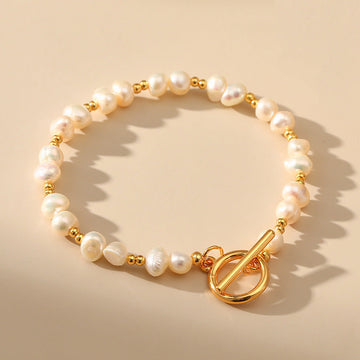Scratch and Wear Prevention Maintenance for Stone Bracelets
Stone bracelets, whether crafted from delicate gemstones or durable semi-precious materials, are prone to scratches and wear over time. Proper maintenance not only preserves their aesthetic appeal but also extends their lifespan. Below are practical strategies to protect stone bracelets from damage caused by friction, impacts, and environmental factors.
Understanding Stone Hardness and Vulnerabilities
The first step in preventing scratches and wear is understanding the properties of the stones in your bracelet.
Mohs Scale Considerations
- Hard vs. Soft Stones: Stones like quartz (Mohs hardness 7) resist scratches better than softer ones like opal (5.5–6.5) or pearl (2.5–4.5). Avoid pairing soft stones with harder materials to prevent abrasion.
- Layered or Porous Stones: Materials like turquoise or lapis lazuli have porous surfaces that absorb oils and chemicals, leading to discoloration or weakening. These require gentle handling and specialized cleaning.
Identifying High-Risk Areas
- Clasps and Findings: Metal components can scratch stones if they rub against them. Ensure clasps are smooth and do not protrude.
- Edges and Protrusions: Bezel settings or cabochons with sharp edges are more likely to chip or scratch. Opt for rounded or polished edges when possible.
Daily Care and Handling Practices
Simple habits can significantly reduce the risk of scratches and wear.
Safe Storage Solutions
- Individual Pouches: Store each bracelet in a soft, padded pouch to prevent contact with other jewelry. Microfiber or velvet linings offer extra protection.
- Avoid Cluttered Boxes: Overcrowded jewelry boxes increase the likelihood of stones knocking against each other. Use dividers or compartmentalized storage.
Wear and Removal Techniques
- Last On, First Off: Put on stone bracelets after applying lotions, perfumes, or makeup to avoid chemical exposure. Remove them before activities that involve physical strain or contact with rough surfaces.
- Gentle Handling: Avoid tugging or pulling on the bracelet, especially when clasping or unclasping it. Delicate stones may dislodge if subjected to sudden force.
Cleaning and Polishing Methods
- Use Soft Materials: Clean stones with a soft, damp cloth or a specialized jewelry polishing cloth. Avoid abrasive materials like paper towels or toothbrushes, which can scratch surfaces.
- Mild Cleaning Solutions: For stubborn dirt, use a mild soap and water mixture. Avoid harsh chemicals (e.g., bleach, ammonia) that can erode stone surfaces or damage metal settings.
Protective Measures During Use
Minimizing exposure to damaging conditions helps maintain the bracelet’s condition.
Avoiding Harsh Environments
- Limit Sun Exposure: Prolonged UV rays can fade or discolor certain stones, especially organic materials like amber or coral. Store bracelets away from direct sunlight when not in use.
- Stay Clear of Chemicals: Household cleaners, chlorine, and saltwater can damage stones and metal. Remove bracelets before swimming, cleaning, or gardening.
Wearing with Caution
- Pair Wisely: Avoid wearing stone bracelets alongside metallic bangles or watches with rough edges. If stacking, choose pieces with similar hardness levels.
- Mindful Activities: Remove bracelets before exercising, lifting heavy objects, or engaging in manual labor. Sweat and friction can accelerate wear.
Professional Maintenance and Repairs
Regular check-ups by a jeweler ensure early detection of potential issues.
Routine Inspections
- Clasp and Setting Checks: Have a professional inspect the bracelet annually for loose stones, worn prongs, or faulty clasps. Tightening settings or replacing damaged parts prevents loss or further damage.
- Repolishing and Resurfacing: For stones with minor scratches, a jeweler can repolish the surface to restore shine. However, excessive polishing may reduce the stone’s size, so this should be done sparingly.
Resizing and Reinforcement
- Elastic or Cord Replacement: For bracelets with stretchy bands, replace the elastic every 1–2 years to prevent breakage. Similarly, restring leather or silk cords if they show signs of fraying.
- Metal Band Adjustments: If the metal band bends or stretches, a jeweler can resize or reinforce it to maintain structural integrity.
Long-Term Storage and Preservation
Proper long-term storage safeguards bracelets from environmental damage.
Climate-Controlled Environments
- Humidity and Temperature: Store bracelets in a cool, dry place with stable humidity levels. Extreme heat or cold can cause stones to crack or metal to tarnish.
- Anti-Tarnish Solutions: Use silica gel packets or anti-tarnish strips in storage containers to absorb moisture and prevent oxidation of metal components.
Occasional Wear and Rotation
- Prevent Stagnation: Stones benefit from occasional exposure to air and light. Rotate your bracelet collection to ensure even wear and prevent long-term storage-related issues.
- Reconditioning: Before storing a bracelet for an extended period, clean it thoroughly and inspect for any signs of damage. Address issues promptly to avoid deterioration.
Conclusion
Protecting stone bracelets from scratches and wear requires a combination of daily care, mindful handling, and professional maintenance. By understanding the properties of the stones, adopting safe storage practices, and seeking regular inspections, you can keep your bracelets looking pristine for years. Whether worn daily or treasured as heirlooms, these maintenance tips ensure your stone bracelets remain both beautiful and durable.







